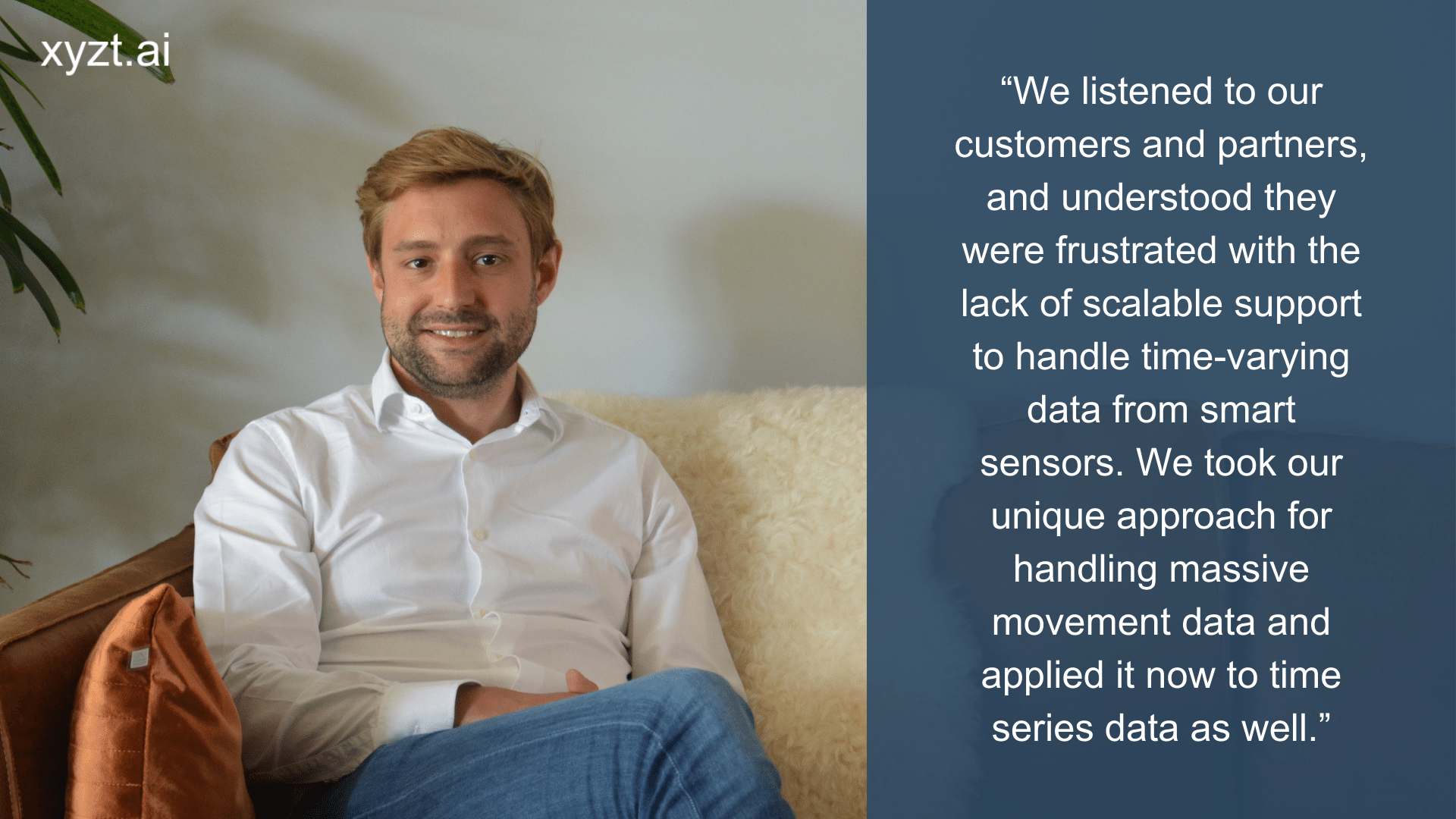xyzt.traffic.insights™
A ready-to-use traffic insights dashboard to monitor and analyze road safety and efficiency for your municipality or city
Use cases for geospatial time series data
Smart city applications
Mobility companies can leverage IoT devices for smart city applications with camera feeds, air quality and noise pollution sensors, or privacy-preserving crowdsensing sensors to count and measure the effect of pedestrians, bicycles, and other traffic over time.
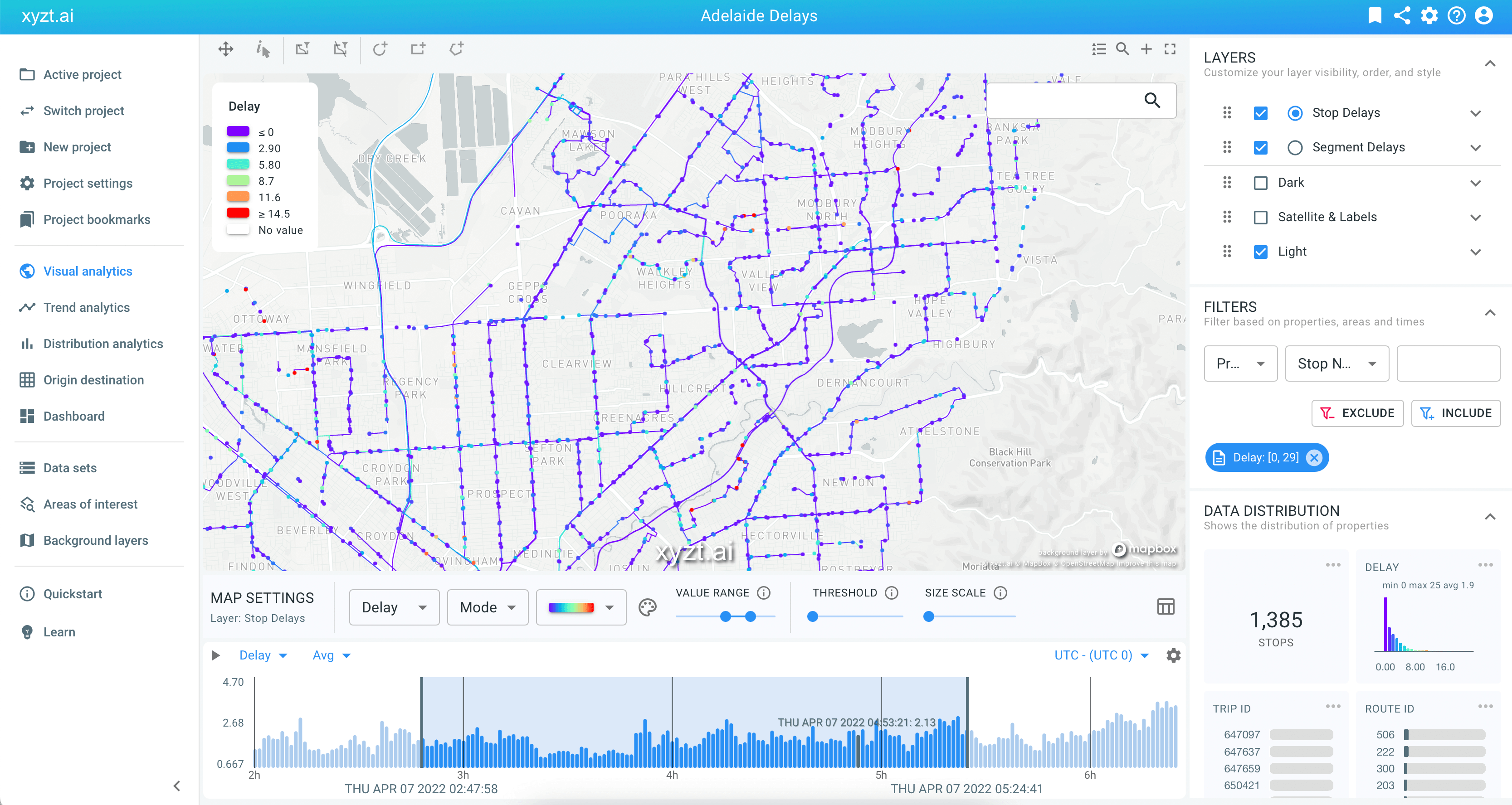
Port congestion analysis
Port authorities keep track of different anchorage zones or terminals to identify how many vessels are present at any given time and how long they stay there. By visualizing and analyzing this information over time, port authorities gain deep insights into the level of congestion and how to improve for a more efficient future policy.
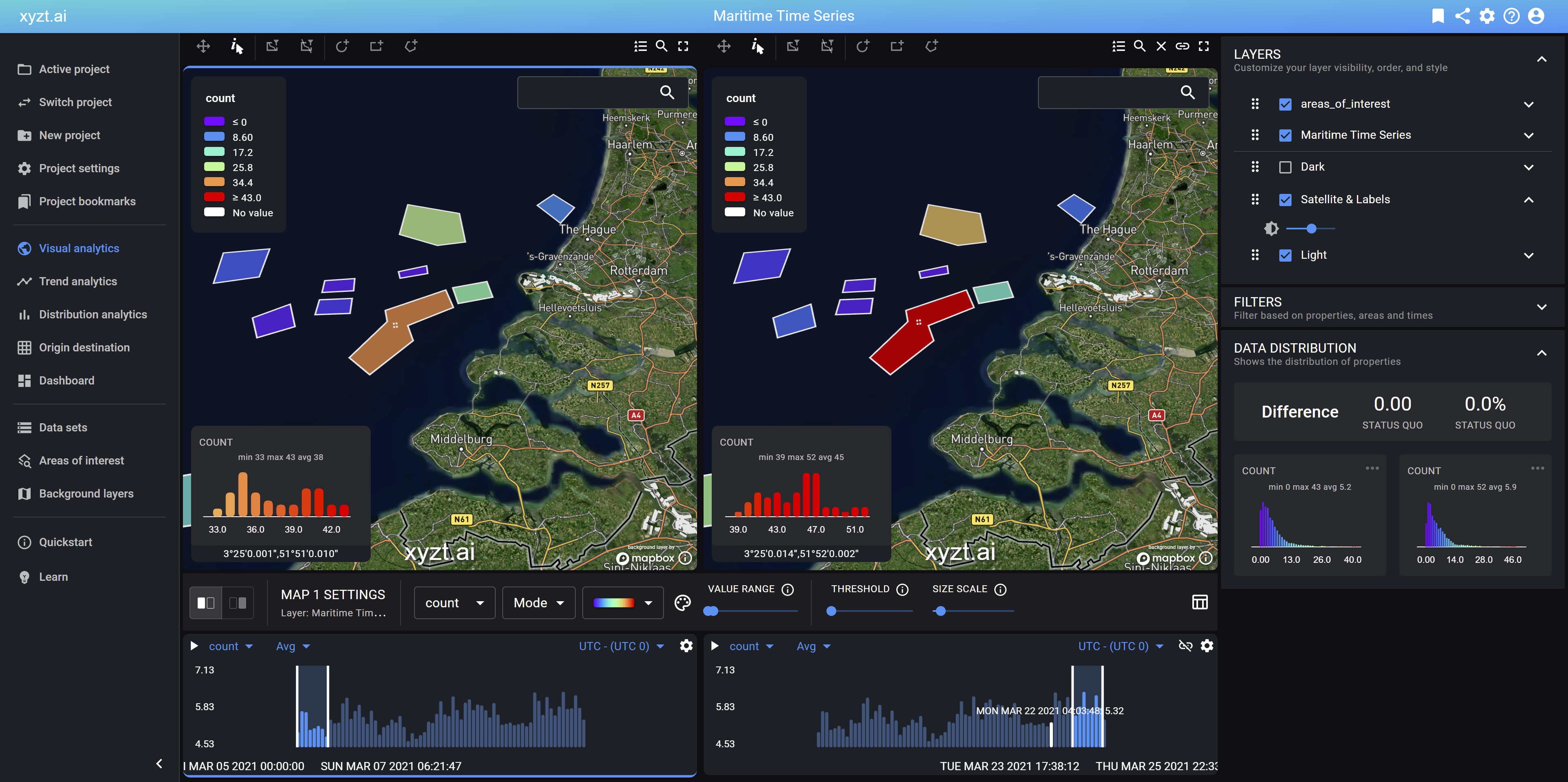
Crowd monitoring for safety
Privacy-preserving crowdsensing sensors enable companies and city authorities to increase safety and security by visualizing and monitoring people flow in real-time or by analyzing historic time series data to learn from passenger flows and to avoid overcrowding.
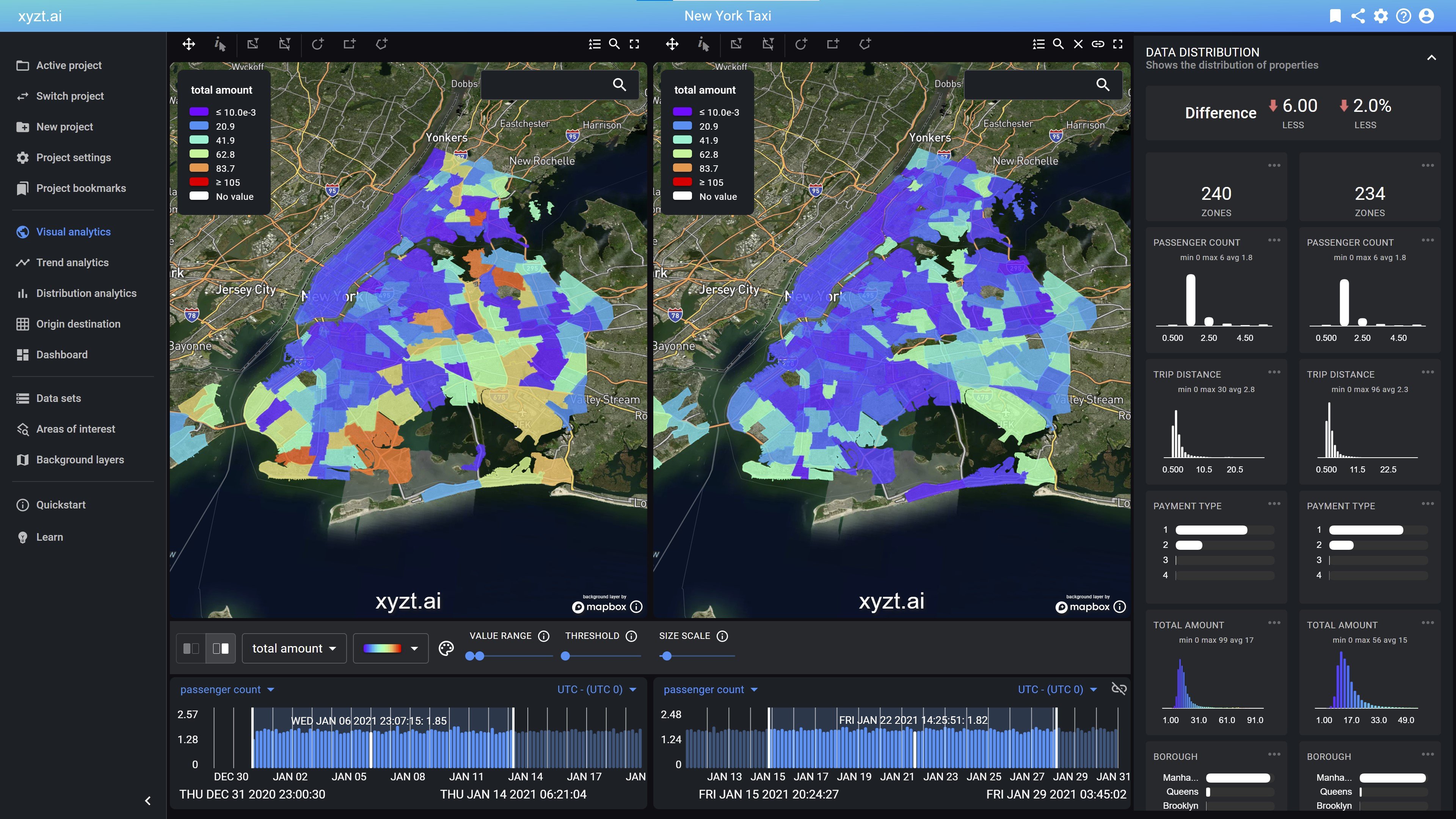
“Working with xyzt.ai is such a win-win. We capture real-time series data with our sensors and by using the xyzt.ai analytics tool, we can make the data intuitive for our customers to understand. We can spatially visualize the data, learn about the different segmentations, and we can create data dashboards to combine it with our own. This combination of having a go-to tool that we can use internally as well as externally to show our data to customers is very important for us.”

The possibilities for geospatial time series data analysis
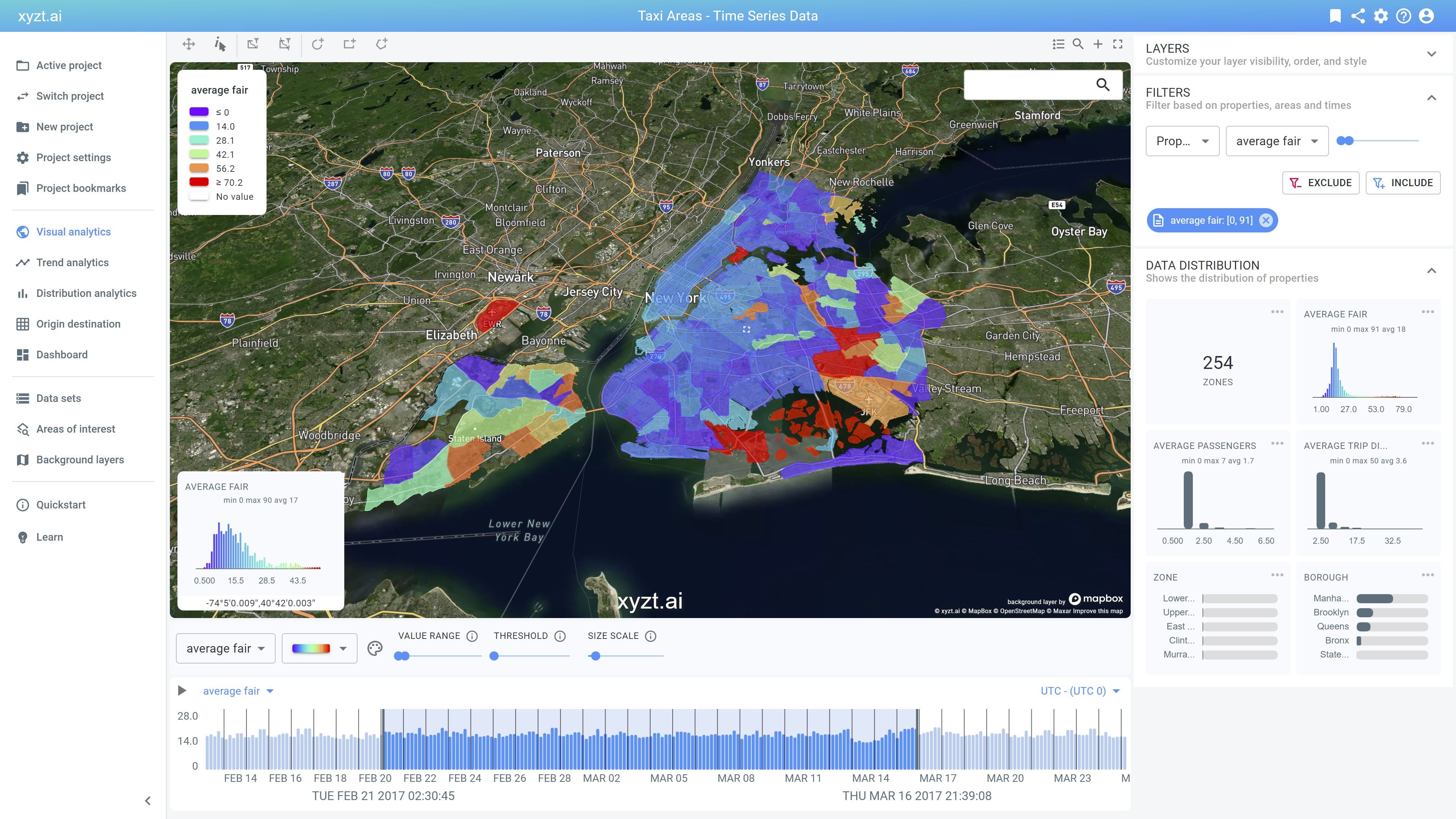
Big data, new opportunities
The amount of geospatial time series data is exploding as a result of the
rapid increase in the use of Internet-of-Things devices and sensors for the mobility, maritime, and people flow industry.
By visualizing and analyzing the massive amounts of geospatial time series data with a powerful analytics tool, companies and agencies can translate sensor data into business intelligence and new opportunities.
There are countless possible use cases in which time series data analysis leads to actionable information. Some can be quite general, others are very specific and context-dependent.
Do you have one in mind? Let us know!
What is geospatial time series data exactly
Geospatial time series data is data that changes over time, but that is captured at a fixed location. This means the source is static, while the information the sensor or device is capturing, is dynamic.
For example, a noise pollution sensor capturing the volume of sound in a busy street. The sound frequencies vary, but the location of the sensor remains the same.
Why is geospatial time series data important
Digital transformation and the trend of connectivity across the mobility, maritime, and people flow industries are accelerating the use of various connected devices, such as cameras, microphones, and a lot more smart sensors.
These smart sensors generate billions of geospatial time series data on a daily basis and stimulate the development of intelligent systems that make our world smarter and more sustainable.
How to benefit from geospatial time series data
To extract innovative insights out of your geospatial time series data, your analytical tool should:
- Scale and visualize billions of geospatial time series data
- Be easy to use so you don’t create unnecessary bottlenecks within your company
- Allow you to bring your own data and combine other data sets, such as movement data.
- Provide you with advanced interactivity to step beyond visualization and dig in the data.
- Enable you to create dashboards and analytical reports to share your insights with colleagues or external parties.
Context is a crucial element in any data analysis. Therefore, the capability to add and combine different data sets from different sources is an instrumental, and often undervalued, tool for any modern data analyst.
For example, the combination of geospatial time series data with movement data creates interesting insights and opportunities.
By combining floating car data (movement data) with noise pollution data (time series data) city authorities and mobility companies are able to gain a deeper understanding of what mobility means today and the effect it has on its environment to create a better tomorrow.
Follow a simple use case
Embark on a thought experiment with me and discover how time series data analysis works so you can do it yourself.
Discover the potential of time series data
Have a chat with Nick and learn how time series data analysis helps you understand your world better.
Choose your own time and day.
